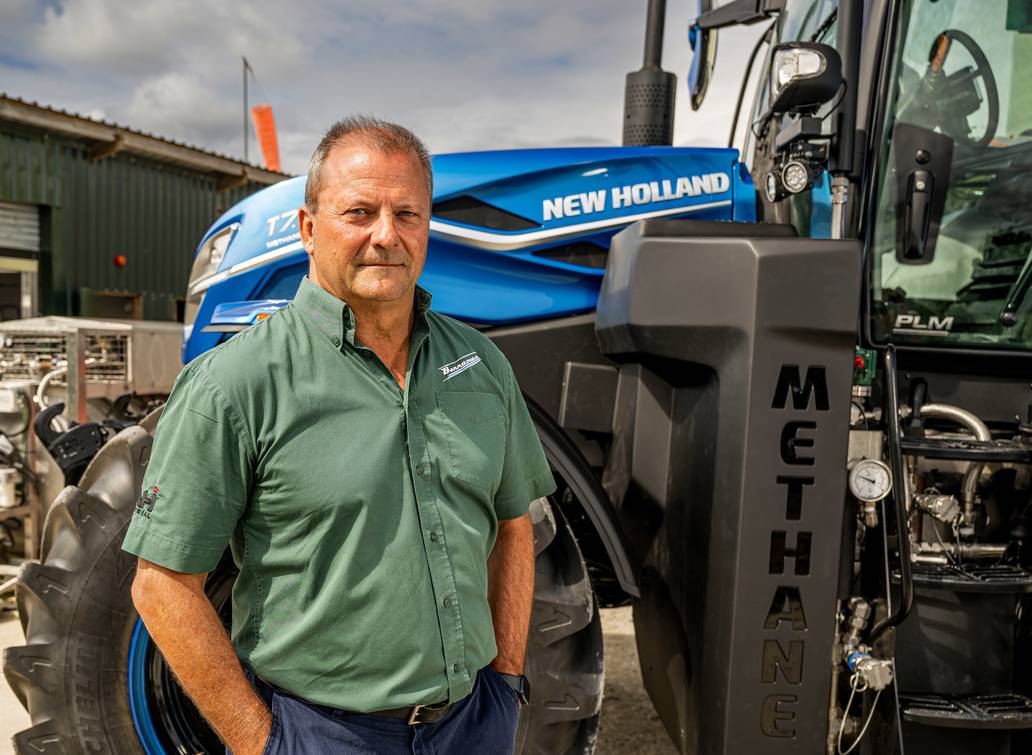Post - Blog
Biomethane: The UK's untapped energy opportunity
- a month ago (2025-10-11)
- Junior Isles

Dr Chris Mann, Co-founder and Chief Technology Officer, Bennamann

Energy Evolution Conference 2026 Dubai
The biofuel sector is facing a critical decision point that will define the next decade of energy policy. While industry attention has focused heavily on ethanol production in the global journey to net zero emissions, market volatility and regulatory pressures are converging to make biomethane the more strategic investment for energy companies seeking long-term value creation.
Market reality check: the methane factor
Energy markets cannot ignore a fundamental climate accounting reality: methane abatement is not optional for net-zero compliance. Projections consistently require substantial methane reduction to meet 1.5°c targets. The UK's agricultural sector generates approximately 90 million tonnes of organic waste annually, with only three per cent used for energy recovery. This represents an untapped feedstock resource with huge energy value sitting largely outside existing energy supply chains.
From a carbon accounting perspective, biomethane from agricultural waste delivers carbon intensity scores between -300 to -400 on the California Low Carbon Fuel Standard; a benchmark increasingly adopted by international markets. This negative carbon profile creates significant value. By contrast, ethanol production typically achieves carbon neutrality at best, according to most lifecycle assessments.
Beyond crop-based fuels
The ethanol industry faces structural challenges that biomethane avoids entirely. Crop-based biofuel production competes directly with food systems, creating price volatility linked to agricultural commodity markets and weather patterns. Recent agricultural disruptions in major ethanol-producing regions demonstrate this vulnerability.
More critically for energy companies, ethanol production generates waste streams requiring methane management; essentially making biomethane capture a necessary component of any ethanol operation. This creates operational complexity and additional capital requirements that standalone biomethane facilities avoid.
Land use economics also favour biomethane. Converting existing waste streams eliminates the need for dedicated crop production, avoiding land acquisition costs and agricultural land management expenses.
Biomethane offers unique infrastructure advantages that could reshape fuel distribution economics. Unlike centralised ethanol production which requires extensive transport networks, biomethane can be produced and compressed on-site, creating micro-fuel stations at source locations all around the country.
The infrastructure advantage
One of biomethane's most overlooked advantages is infrastructure flexibility. We can create distributed energy networks that bypass grid constraints entirely. A single farm can become a fuel station, producing compressed biomethane on-site for local vehicle fleets. With 8,353 petrol stations (as of 2023) serving the entire UK; this is fewer than the number of dairy farms at around 10,825 dairy farmers according to Dairy UK , as such, a distributed approach could rapidly scale renewable fuel access. Capturing methane from a single farm's waste and using it to power one tractor is equivalent to removing the carbon emissions of 100 households. Now imagine scaling this across the UK's thousands of dairy farms.
Regulatory tailwinds
Government methane accounting currently underestimates agricultural emissions by 70-80%, reporting 38kg per cow annually versus research-supported figures of 145-198kg . As measurement methodologies improve, regulatory pressure for methane capture will intensify, creating compliance-driven demand for biomethane infrastructure.
Three policy developments could accelerate market adoption:
- Enhanced methane reporting requirements will force accurate emissions accounting, creating regulatory demand for capture technologies and potential penalties for unmanaged emissions.
- Heavy vehicle transition mandates are inevitable given the absence of viable electric alternatives for commercial transport over 3.5 tonnes. Biomethane fills this technological gap. While ethanol could match the energy density requirements for heavy-duty applications, it would require significant land conversion to grow the crops required.
- Distributed energy incentives could expand beyond grid-connected systems to support on-site fuel production, creating new market segments for smaller-scale biomethane facilities serving local transport operators.
Agricultural waste represents the biggest opportunity, but grass waste from golf courses, municipal maintenance and roadside management creates additional feedstock volumes currently treated as disposal costs rather than energy resources.
This expanded feedstock base could support biomethane production volumes exceeding current UK biofuel consumption, potentially creating export opportunities to European markets with similar climate commitments but fewer domestic waste resources.
Strategic outlook
While ethanol offers familiar technology and established markets, biomethane represents a convergence of regulatory necessity, resource availability and infrastructure efficiency that creates sustainable competitive advantages.
For energy industry stakeholders, biomethane is not simply another biofuel option; it's a strategic response to climate policy requirements that creates revenue opportunities from waste while reducing supply chain vulnerabilities.
